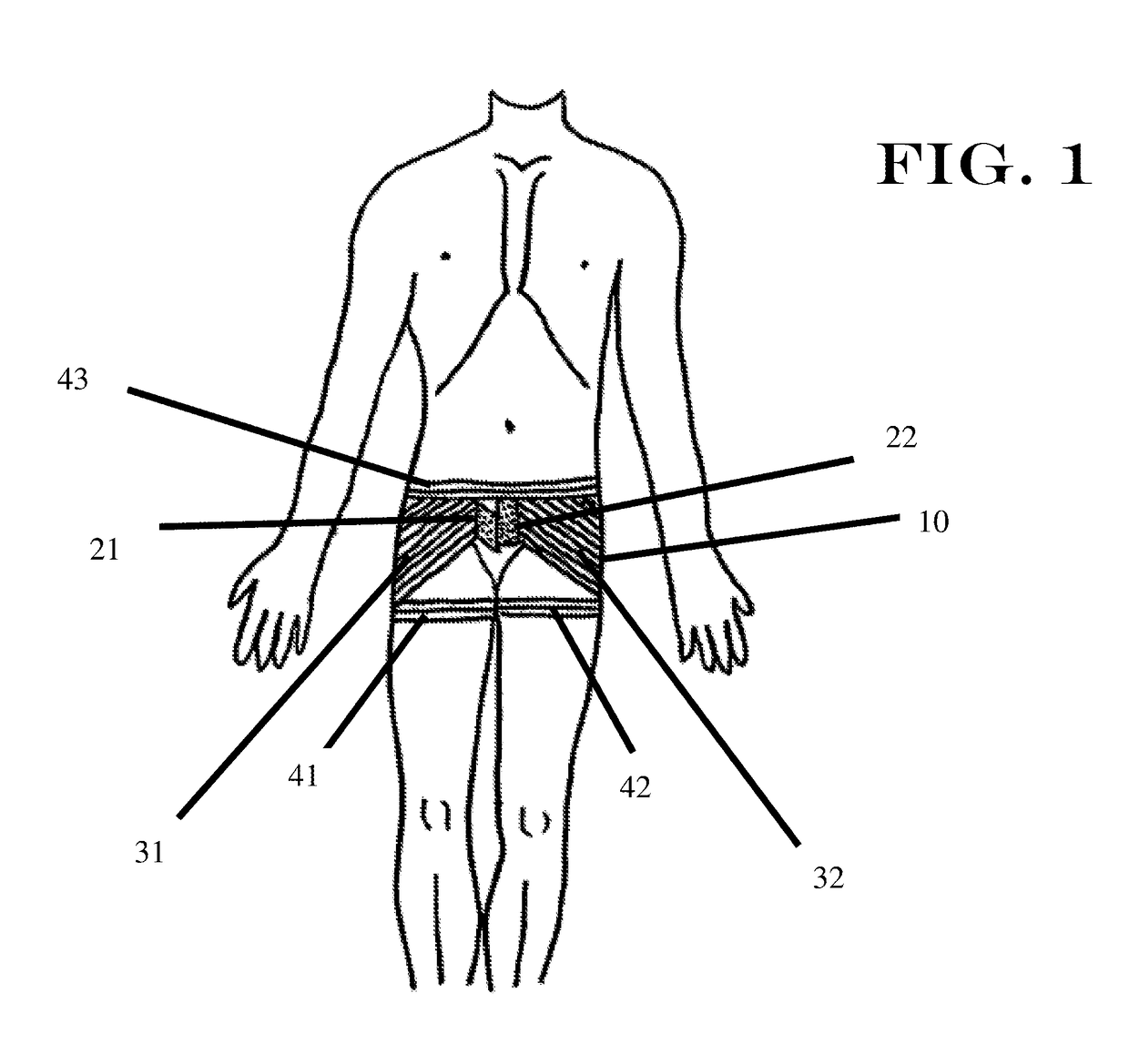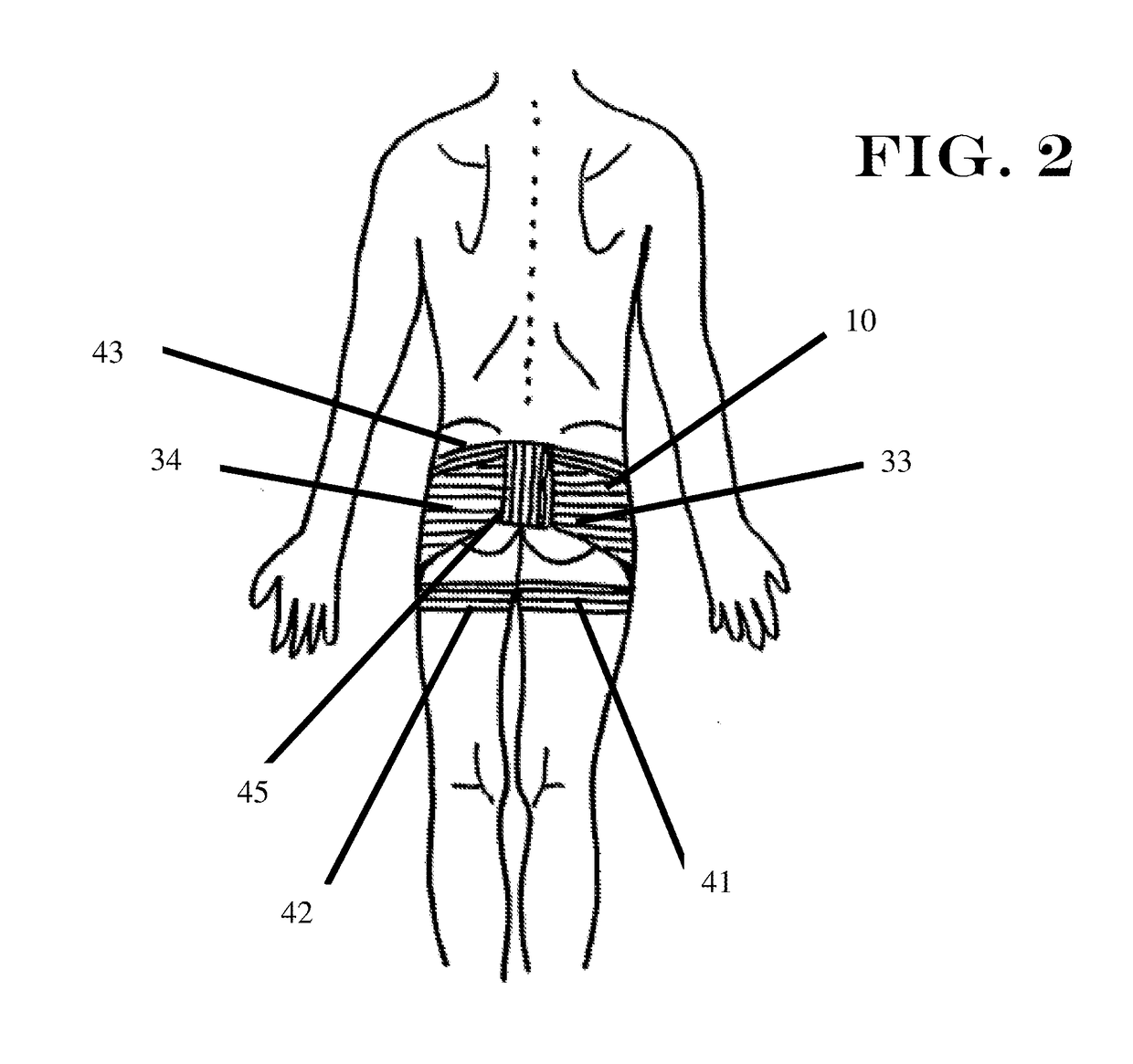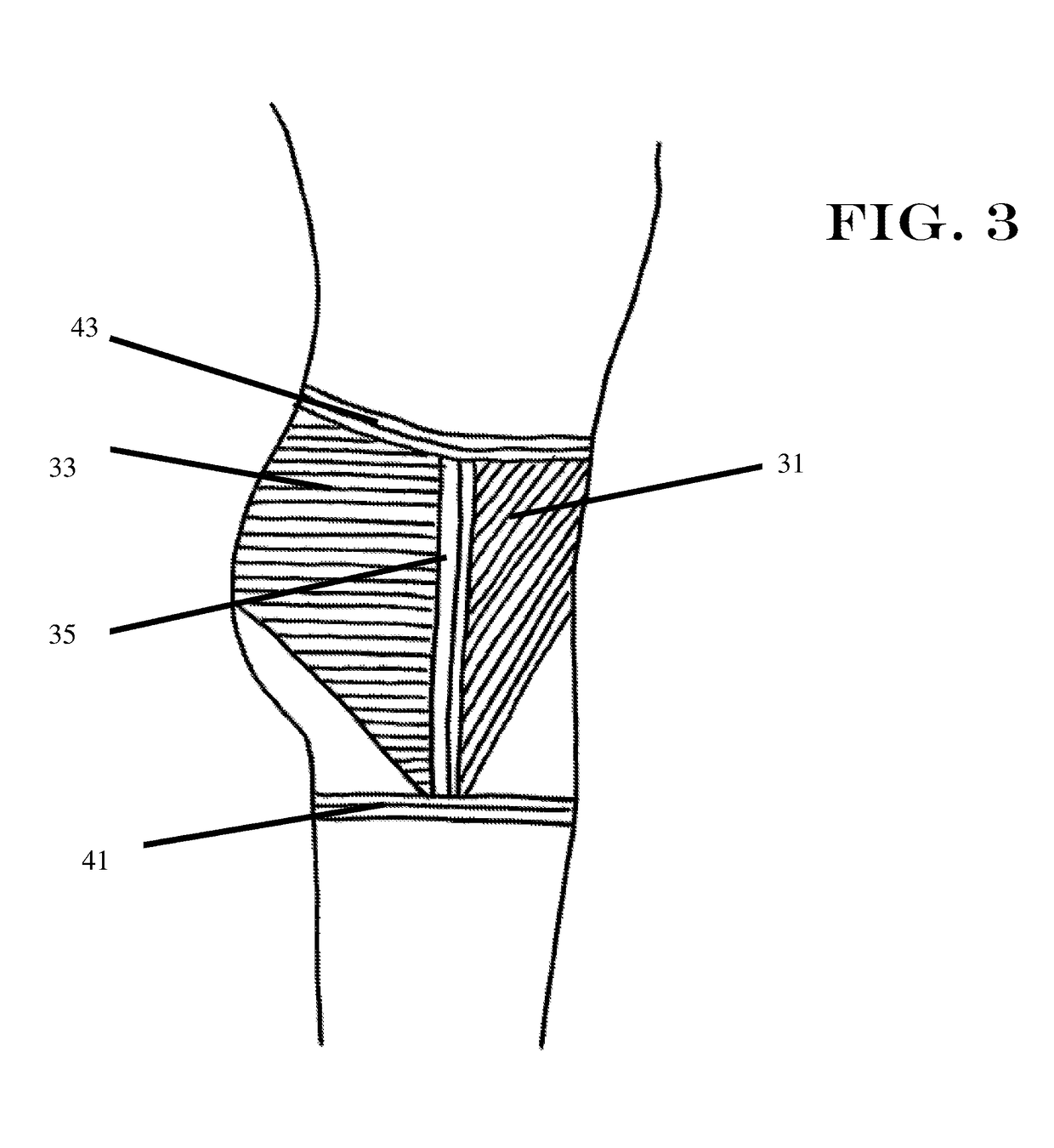Gird Compression Hip Tensioning Garment
a compression garment and hip technology, applied in the field of compression garments, can solve the problems of inability to adjust, inability to relieve the pain of the mid-body and joint stress of many users, and inability to relieve the pain of the hip joint and associated lower back pain, so as to promote the right-to-left hip alignment, improve the posture and joint coordination, and improve the effect of posture and joint coordination
- Summary
- Abstract
- Description
- Claims
- Application Information
AI Technical Summary
Benefits of technology
Problems solved by technology
Method used
Image
Examples
Embodiment Construction
[0016]FIG. 1 illustrates the front view of an exemplary embodiment of a gird compression hip tensioning garment in accordance with the present invention. The depicted garment can be adapted to be worn by both men and women of various sizes. The garment 10 of FIG. 1 comprises a front right-side panel 31, which is adapted to conform to the right-hand side of a wearer's acetabulofemoral and hip regions, and a front left-side panel 32, which is adapted to conform to the left-hand side of a wearer's acetabulofemoral region and lower torso. The garment 10 also preferably comprises a waistband 43.
[0017]The garment 10 of FIG. 1 further comprises a fastening placket 21. Preferably, the fastening placket 21 is adapted to extend from one edge of the wearer's lower abdominal wall to the other edge, as shown in FIG. 1. Preferably, the fastening placket 21 is at least approximately 4 inches in length, and at least approximately 4 inches in width. The fastening placket 21 of this embodiment is fur...
PUM
 Login to View More
Login to View More Abstract
Description
Claims
Application Information
 Login to View More
Login to View More - R&D
- Intellectual Property
- Life Sciences
- Materials
- Tech Scout
- Unparalleled Data Quality
- Higher Quality Content
- 60% Fewer Hallucinations
Browse by: Latest US Patents, China's latest patents, Technical Efficacy Thesaurus, Application Domain, Technology Topic, Popular Technical Reports.
© 2025 PatSnap. All rights reserved.Legal|Privacy policy|Modern Slavery Act Transparency Statement|Sitemap|About US| Contact US: help@patsnap.com



